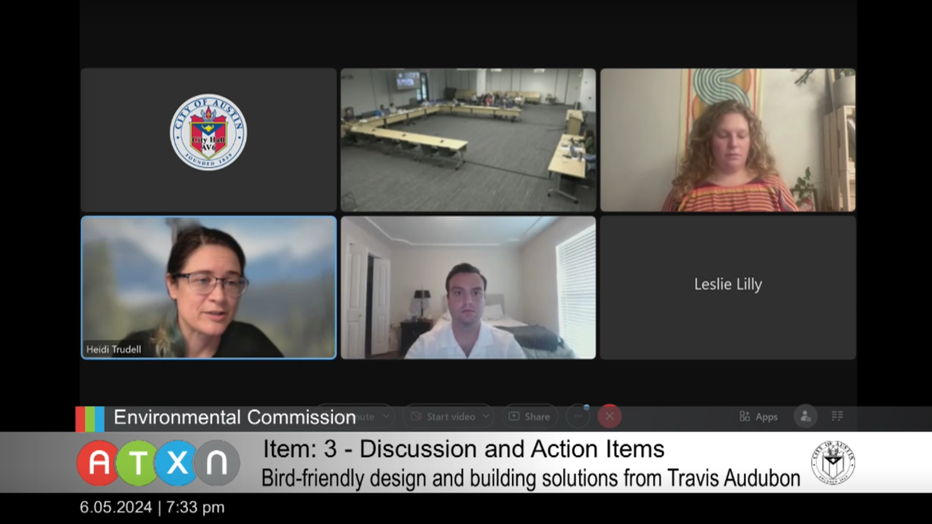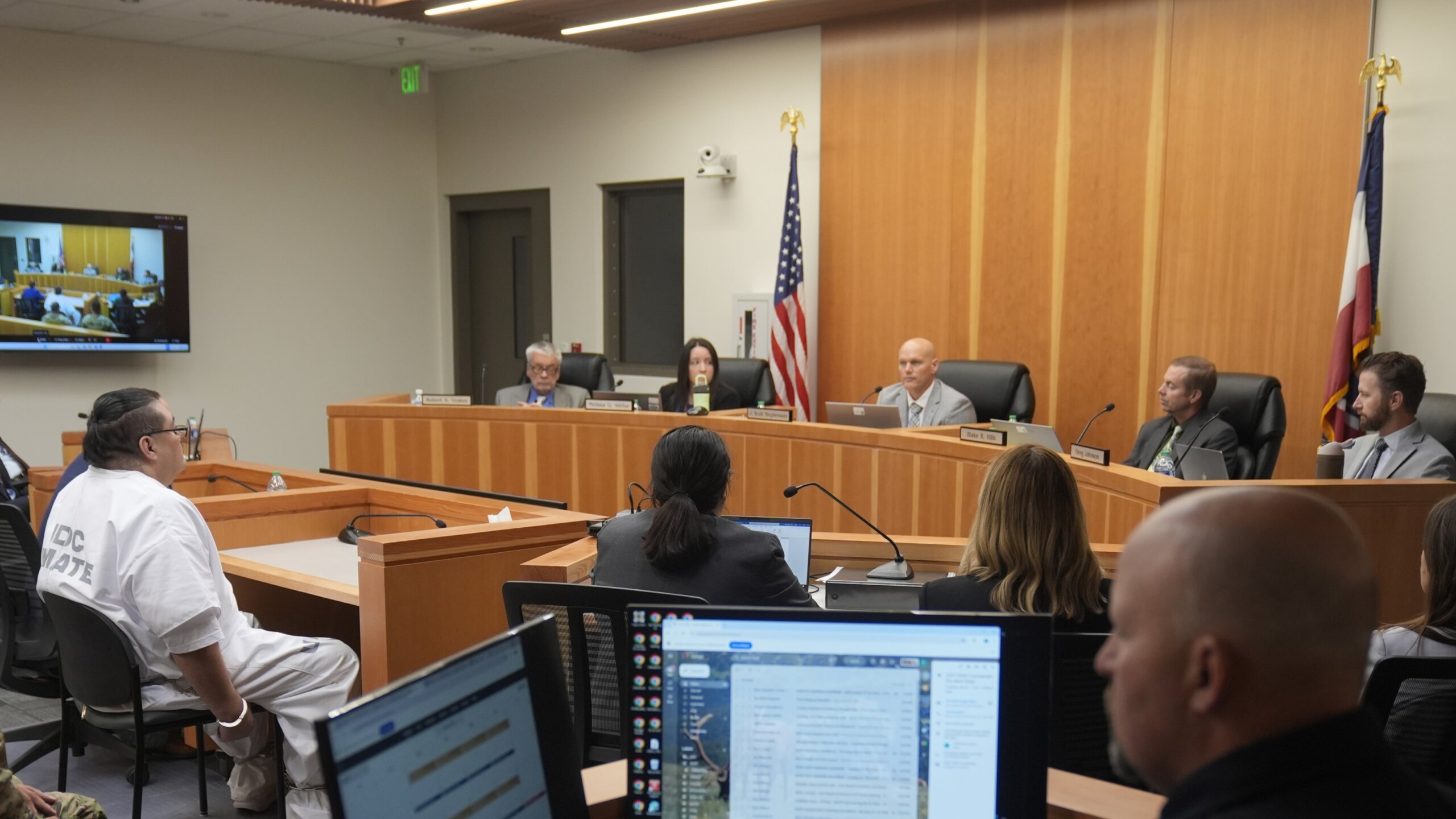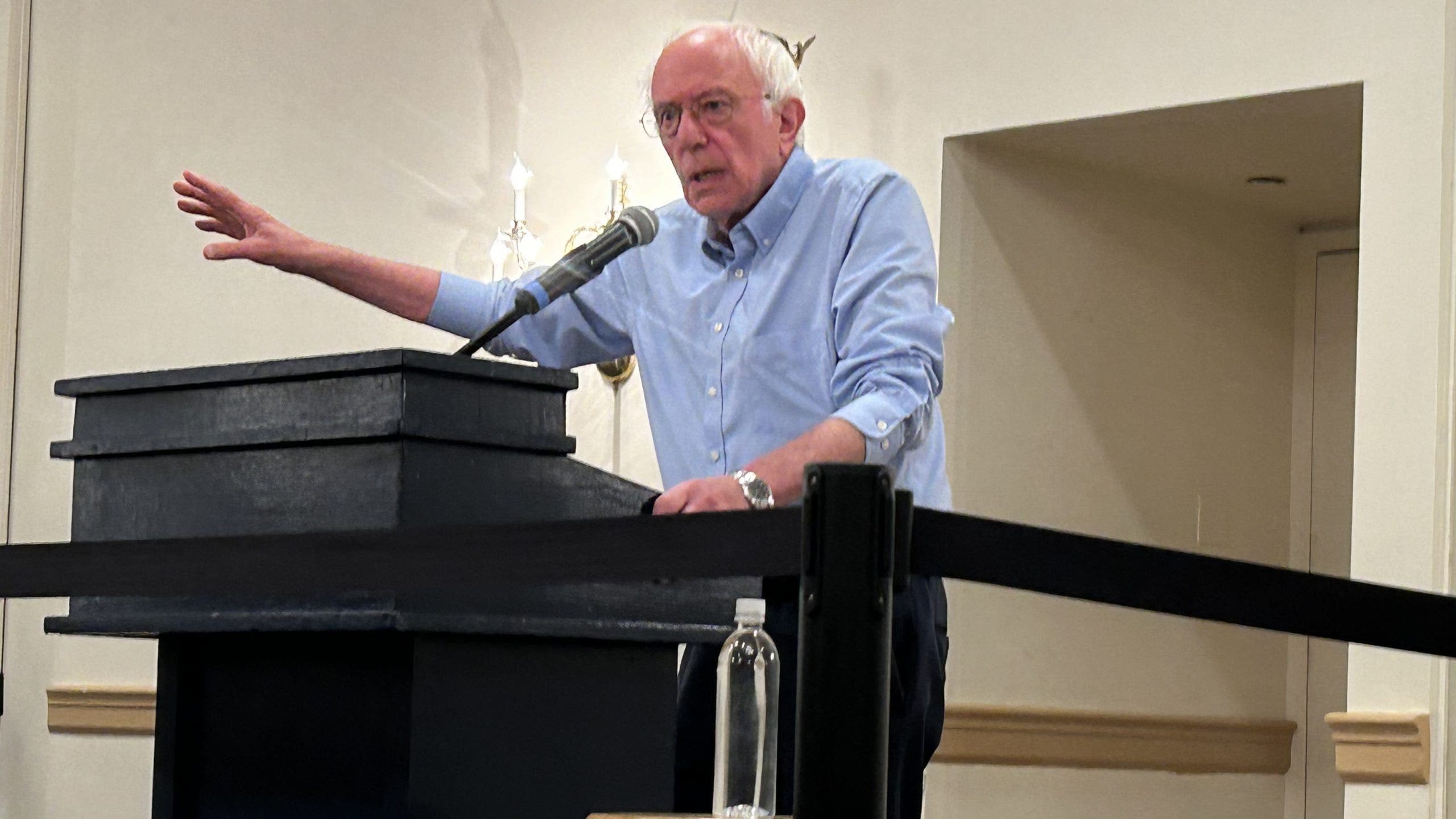Austin, TX
Why some Texas cities are getting rid of their minimum parking rules
:focal(0x0:3000x2000)/static.texastribune.org/media/files/e5fff1e0ea62ade5654c0095a7b49ccd/0316%20Parking%20JJ%20TT%2002.jpg)
Sign up for The Brief, The Texas Tribune’s daily newsletter that keeps readers up to speed on the most essential Texas news.
In car-dependent Texas, most cities have rules on how many parking spots must be built anywhere people live, play or do business. But those requirements have come under scrutiny in recent years, with critics saying they do more harm than good.
As the nation tries to curb carbon emissions and fight climate change, climate activists and urbanists have chided the regulations for encouraging car dependency. Housing advocates and developers have also identified those minimums as a barrier to building more homes and taming housing costs.
“This is a pretty obvious target for helping to address [the housing affordability crisis],” said Tony Jordan, co-founder of Parking Reform Network.
In major Texas cities like Dallas, Fort Worth, San Antonio and El Paso, developers usually can’t build single-family homes or apartments without parking. Government regulations like those, critics argue, effectively force housing developers to provide parking spots where they may have instead built housing — contributing to higher home prices and rents.
Doing away with parking minimums doesn’t mean parking will be abolished, reform proponents say. For instance, cities without parking mandates still must require properties to comply with federal law and build accessible parking spaces for people living with disabilities. And proponents expect developers will still build parking spots even if they’re not required to. But the decision of how much parking they should provide, reformers argue, should be left up to builders, not local governments.
Austin last year became the largest city in the country to do away with its minimum parking requirements, following in the steps of other major cities like Portland, Minneapolis and San Jose. Nixing parking minimums is part of a slate of reforms in Austin to loosen city land-use regulations and allow more housing to be built amid the city’s severe housing affordability crisis.
Before the parking rules were overturned, Austin required single-family homes to have at least two parking spots and apartment buildings to have one-and-a-half spaces for every one-bedroom apartment, plus half a space for every additional bedroom. Those requirements drove up construction prices and resulted in higher rent bills. A city estimate projected that requiring one additional parking space per unit raised monthly rent by up to $200.
And at a time when Austin is trying to beef up its public transit to the tune of billions of dollars and encourage denser transit-friendly development, policymakers concluded it didn’t make sense to continue requiring a minimum amount of parking spots.
“A city like Austin that has adopted progressive mobility, affordability and climate goals should not be in the business of requiring an arbitrary amount of car storage in every new development,” Austin City Council Member Zohaib “Zo” Qadri, the proposal’s author, said in a statement after the November vote.
Dallas could soon take Austin’s place as the largest U.S. city to get rid of its parking requirements. In January, a subcommittee of the Dallas’ City Plan Commission advanced a plan to nix parking minimums — a proposal the Dallas City Council could take up this year.
Dallas is also facing a dire housing shortage. The Dallas-Fort Worth metropolitan region surpassed 8 million people last year, and that booming population growth has put pressure on its housing stock. Dallas by itself is short some 33,000 homes that would fall within the price range of the city’s lowest earners, according to an estimate from the Child Poverty Action Lab. That shortage is expected to balloon to 83,000 by the end of the decade.
Allowing housing developers to determine how much parking they need rather than imposing city requirements on them is one way to speed up the development process and chip away at those needs, said Michael Wade, senior planner in Dallas’ planning and urban design department.
The current requirements are “slowing things down to a rate that makes it hard to meet our housing goals,” Wade said.
Rethinking parking in Texas
Reforming parking requirements isn’t just a big-city fixation. The week after Austin got rid of its parking minimums, Taylor, a town of about 17,000 people perched about an hour away, did the same as part of a broader rewrite of its land development code to allow denser housing stock. Taylor is the latest Texas town to ditch its minimum parking requirements, joining Bandera and Bastrop, according to the Parking Reform Network.
Taylor nixed its parking minimums, Assistant City Manager Tom Yantis said, in an effort to bring down housing costs, boost their tax base by allowing denser development and encourage more walkable development — in line with how the town developed in its early years before the rise of the automobile and parking minimums.
“If we start to build neighborhoods that are built around small walkable blocks, maybe in the future we’ll have the opportunity in neighborhoods for people to walk or bicycle to the grocery store,” Yantis said.
Minimum parking spot mandates arose as automobile ownership took off in the middle of the last century. U.S. cities adopted these rules in an attempt to ease a shortage of curb parking spots, relieve traffic congestion and accommodate suburban commuters and shoppers arriving to the urban core by car. Now, it’s common for cities to have rules on the books determining how much parking should be built with homes and businesses like grocery stores, restaurants, offices, video game arcades and even places that serve and sell alcohol.
Critics say those requirements have had nasty side effects, including increased sprawl, overreliance on cars and a proliferation of unsightly parking lots. If people know there’s a parking spot waiting for them at their destination, they’re more likely to take a car than other modes of transportation. Parking is an invisible cost even when it appears to be free, they argue — landlords and businesses ultimately pass on the cost of providing that parking to consumers via routine costs like monthly rents, grocery bills and restaurant tabs.
/https://static.texastribune.org/media/files/11ce1b01b282f5faa2ab6f1c70704e2c/0316%20Parking%20JJ%20TT%2004.jpg)
An apartment parking garage in East Austin on March 16, 2024.
Credit:
John Jordan/The Texas Tribune
Some of the rules are also fairly arbitrary, opponents say. Jordan points out that, for example, Dallas requires sewage treatment plants to provide one parking spot for every million gallons of capacity and water treatment plants must provide two spots regardless of capacity.
“The constraint is completely artificial,” Jordan said. “It’s just based on some number that someone put in a book 40 or 50 years ago.”
Parking minimums drive up the cost of housing, too, critics say. A spot in a typical parking lot can cost between $5,000 to $10,000, some estimates show, while a spot in a parking garage can cost from $25,000 to $65,000. Landlords then pass the cost of building and maintaining those parking spots on to tenants — who are more likely to have fewer cars than homeowners or not own one at all — in the form of higher rents.
“If you’re not having to use land for parking, you can use it for housing,” said Claudia Aiken, director of new research partnerships at New York University’s Furman Center and Housing Solutions Lab. “If you’re not pouring that money into developing parking, you could provide units that are more affordable.”
Minimum parking requirements can limit how many housing units are built on a lot and discourage builders from creating homes with more bedrooms. In Dallas, housing developers must build one to two parking spots for single-family homes and one space for every bedroom in an apartment.
When designing a mixed-income development with 21 units that includes townhomes, duplexes and fourplexes in South Dallas, the city’s parking requirements limited how many housing units could ultimately go on the lot, said Lisa Neergaard, associate director of planning at buildingcommunityWORKSHOP, a nonprofit architecture and planning firm. The rules also prevented designers from including more three-bedroom units designed to accommodate families, Neergaard said.
“Land was pretty inexpensive for a very long time, so parking was not as big of a burden,” Neergaard said. “But as the value of our land continues to increase, because the amount of available land is decreasing, parking is infinitely more expensive.”
Life without parking minimums
Cities elsewhere that have retooled or nixed their parking minimums saw more home construction in the aftermath. Minneapolis got rid of its minimum parking requirements as part of a slate of reforms intended to spur housing production — which has helped the city keep rent growth in check and build housing at a quicker clip than other places in Minnesota and the Midwest, the Pew Charitable Trusts found. Seattle and Buffalo, New York, also saw more homes built after reducing or getting rid of their parking requirements.
Getting rid of parking requirements has its detractors. Neighborhood groups and residents opposed to such reforms worry that developers will skimp on parking spots, forcing drivers who can’t find adequate parking at their destination to search for it on neighboring streets and clog traffic. Laura Palmer, a Dallas resident, told the city panel that approved a proposal to nix parking minimums that patrons of the nearby Bishop Arts District, a pedestrian-friendly collection of shops, restaurants and bars, already take up the curb on streets in her neighborhood.
“We are asking you as the city to help protect our neighborhoods,” she told the panel in January.
There are ways to make sure that neighborhoods don’t suffer spillover effects, reform proponents argue, like only allowing residents to park on residential blocks or installing parking meters. But Dallas city staff and transportation officials with the North Central Texas Council of Governments, which coordinates transportation planning for the region, agree that parking in “local districts, main street-like corridors, and transit-oriented developments tends to be either adequate for auto demand, or to even far surpass demand,” Dallas officials wrote in a recent report.
The decision of how much remaining parking to build will simply be left to developers, proponents say, and financiers are unlikely to back developments without parking if they think offering a certain amount of spaces makes financial sense. After Seattle retooled its parking requirements, developers built about 40% less parking than they would have without the changes, one study found. But more than two-thirds of developments that weren’t required to build parking still included some, the study found.
First: An older apartment complex in East Austin on March 16, 2024. Parking minimums can raise costs on housing and contribute to urban sprawl. Last: New apartment buildings under construction in East Austin.
Credit:
John Jordan/The Texas Tribune
It will likely take years if not generations to see the full effects of abolishing parking mandates, Wade said, but it’s a small step to allowing denser development and weaning people off of cars.
“We have the power to become an even more resilient city and provide that to the next generation,” Wade said.
We can’t wait to welcome you to downtown Austin Sept. 5-7 for the 2024 Texas Tribune Festival! Join us at Texas’ breakout politics and policy event as we dig into the 2024 elections, state and national politics, the state of democracy, and so much more. When tickets go on sale this spring, Tribune members will save big. Donate to join or renew today.

Austin, TX
Going for gold: The athletes and coaches representing the Austin area in the 2024 Paris Olympics

Not sure who to root for in the 2024 Paris Olympics? This kinda exhaustive list will give you an idea if you’re looking for some athletes with ties to Austin. These participants either made Austin their home, grew up around Austin, or attended the University of Texas or Texas State. Some are favorites for medals, others have good stories.
Basketball
Yvonne Anderson — Serbia — Texas Longhorn 2008-2012
The Austin basketball entries will take you back at least a decade. Anderson played for Texas basketball during former President Barack Obama’s first term. A professional in Europe since 2013 she debuted for the Serbian team in 2020 and played with them in Tokyo. Her father, Mike Anderson, has served as the head men’s coach at the University of Arkansas, the University of Missouri, and, most recently, at St. John’s University.
Kevin Durant — USA — Texas Longhorn 2006-2007
Durant will play in his fourth Olympics for Team USA in basketball. He has three gold medals and was the MVP of the Tokyo Games basketball tournament. The 35-year-old is one of the most decorated NBA players, with two championships, a league MVP, two Finals MVP awards, and more. He spent one year on the UT Austin campus before becoming the second pick in the NBA Draft. Durant is originally from Suitland, Maryland. Durant now plays for the Phoenix Suns.
Royal Ivey — Coach, South Sudan Men’s Basketball — Texas Longhorn 2000-2004
Former Texas Men’s Basketball guard Royal Ivey will serve as head coach for South Sudan in the country’s first Olympic basketball tournament. After the games, he’ll return to Texas as an assistant coach for the Houston Rockets.
Golf
Sara Kouskova — Czech Republic — Texas Longhorn 2018-2022
Kouskova won the 2015 Austrian International Ladies Amateur Championship as a teen. She came to Texas where she was All-Big-12-Conference twice. She later became the first amateur Czech golfer to win a professional tournament. Kouskova competes on the Ladies European Tour (LET) and has been on the Czech national team since 2013.
Scottie Scheffler — USA — Texas Longhorn 2014-2018
Scheffler is the top-ranked pro golfer in the world and will compete for Team USA in golf. He won his second Masters Tournament in April. Scheffler went to UT where he helped the golf team win three Big 12 titles. He grew up in Dallas, where he now lives.
Rowing
Kaitlin Knifton — USA — McCallum High School, Texas Longhorn 2019-2023 — Women’s 4
Kaitlin Knifton is a McCallum High School graduate and will compete for Team USA. She won two national titles at the University of Texas. She danced in high school. Her dad, Matt, owns the Texas Rowing Center right off the hike and bike trail trail on Lady Bird Lake. She now trains in Princeton, N.J.
Kara Kohler — USA — Austin resident — Women’s Single Scull
Kara Kohler will compete for Team USA in rowing. Originally from Clayton, California, the 33-year-old rowed in college at the University of California, Berkeley. Kohler now lives and trains in Austin.
Daisy Mazzio-Manson — USA — Texas Longhorn 2020-2021 — Women’s 4
Mazzio-Manson is a Yale grad. She transferred to Texas and helped win a national title in her last year of eligibility. She carries on a legacy. Her mother rowed for the U.S. in Barcelona in 1992.
Sophia Vitas — USA — Austin resident — Women’s Double Sculls
Vitas is from Franklin, Wisconsin. She was on four prior U.S. national teams, though this is her first Olympic squad. She attended the University of Wisconsin, but now calls Austin home.
Soccer
Julia Grosso — Canada — Texas Longhorn 2018-2021
Gold medalist Grosso cemented herself in Canadian Olympic history at the Tokyo games, nailing the decisive goal in the penalty shootout to earn Canada the title. She went on to play the last three seasons for the legendary Italian club Juventus. The Vancouver native will return to North America after the games to finish the NWSL season with the Chicago Red Stars.
Swimming and Diving
Angie Coe — Taiwan — Texas Longhorn 2023 to present — 200m individual medley (IM)
Angie Coe (200 IM) will compete for Taiwan. She just wrapped up her freshman year on the 40 Acres where she helped the team win a Big 12 championship. Her sister swims at West Point.
Caspar Corbeau — The Netherlands — Texas Longhorn 2019-2023 — 100m and 200m breaststroke
Caspar Corbeau will represent The Netherlands in his second Olympic games. He won a team NCAA title in 2021 and two national relay championships in 2021 and 2022. He earned a spot on the Netherlands squad in Tokyo in the same events.
Anna Elendt — Germany — Texas Longhorn 2020-2024 — 100m breaststroke, 4×100 medley relay
Anna Elendt will return to her second Olympics competing for Germany. Born and raised in the greater Frankfurt area, Elendt made Austin her college home. While at Texas she set school records in the breaststroke and was an All-American.
Carson Foster — USA — Texas Longhorn 2020-2024 — 200m IM, 400m IM
Foster was an All-American swimmer at the University of Texas. He helped Team USA win a world championship in the 800m relay in 2022. Foster is from Cincinnati, Ohio.
Erin Gemmell — USA — Texas Longhorn 2023 to present — 200m freestyle, 4x200m freestyle relay
Gemmell just finished her freshman year at the University of Texas where she won a Big 12 conference title and All-American recognition. Gemmell is from Potomac, Maryland.
Alison Gibson — USA — Austinite, Texas Longhorn 2016-2020 — 3m springboard
Alison Gibson competed in synchronized diving for Team USA in the Tokyo Olympics, finishing 8th in the 3m event. The 25-year-old grew up in Austin and attended UT where she won an individual NCAA diving title and was an All-American.
Luke Hobson — USA — Texas Longhorn 2021 to present — 200m freestyle, 4x200m freestyle relay
Hobson holds the U.S. record for the 200m freestyle. He won the Olympic trials in that event. He is originally from Reno, Nevada, and just finished his junior year at UT Austin where he’s won five NCAA Championships in 200m freestyle, 500m freestyle, and 800m freestyle relay.
David Johnston — USA — Texas Longhorn 2020-2024 — 1500m free, open water 10K
Johnston will compete for Team USA in swimming. Johnston was part of UT Austin’s 2021 NCAA National Championship Team. He is originally from Dallas.
Drew Kibler — USA — Texas Longhorn 2018-2022 — 4x200m freestyle relay
Kibler will compete again for Team USA in freestyle swimming. He swam in the relays at the Tokyo Olympics. Kibler won a national team championship, as well as multiple individual titles while swimming at UT Austin. He is from Carmel, Indiana, originally, but now lives in Scottsdale, Arizona.
Hubert Kos — Hungary — Texas Longhorn 2024 to present — 200m backstroke, 100m butterfly, 100m backstroke
Kos won the 200m backstroke at last year’s World Championships. This will be his second Olympic games for Hungary. The new transfer to Texas will join his coach Bob Bowman from Arizona State.
Aaron Shackell — USA — Texas Longhorn 2024 to present — 400m freestyle
Future Austinite Aaron Shackell will compete for Team USA in swimming. Shackell is from Carmel, Indiana, and began his freshman year attending the University of California, Berkeley before leaving school to concentrate on the games. He is transferring to UT Austin after the Olympics. His 17-year-old sister also made the Olympic swim team. Their father swam for Great Britain in the Atlanta Olympics in 1996.
Bob Bowman — Assistant Coach, France — Texas Longhorn head men’s swimming and diving coach
A big 2024 for Bowman continues. He won his first NCAA Men’s Championship at Arizona State University, then was named to replace the legendary Eddie Reese as the Longhorns head coach. He coached Michael Phelps to 23 Olympic gold medals.
Carol Capitani, Assistant Coach, USA — Texas Longhorn head women’s swimming and diving coach
Capitani just finished her 12th year in Austin coaching the Texas swimming program. She led Team USA women at the 2023 World Championships. She is a 10-time winner of Big 12 Coach of the Year honors.
Matt Scoggin, Assistant Coach, USA — Texas Longhorn diver 1981-1985, coach 1994 to present
Matt Scoggin returns to his sixth Olympic games — his fifth as diving coach. After retiring from elite competition after the 1992 Barcelona games, Scoggin took the job as men’s and women’s diving coach at UT and has never looked back. Scoggin’s divers have won more than 20 individual NCAA titles and over 40 individual conference titles.
Tennis
Lulu Sun — New Zealand — Texas Longhorn 2020-2021 — Women’s Doubles
Lulu Sun helped Texas win a NCAA Championship in her one year of collegiate competition. In June at Wimbledon, she became the first New Zealander to reach the quarterfinal of a major tournament in 35 years. She was born in New Zealand to Croatian and Chinese parents, and raised in Switzerland. With many national eligibility options to choose from, she will compete for New Zealand. She is currently ranked 55th on the Women’s Tennis Association tour.
Track and Field
Mariam Abdul-Rashid — Canada — Texas Longhorn 2015-2019 — 100m hurdles
Abdul-Rashad will make her Olympic debut in Paris. She won the Canadian championship in the 100m hurdles. While at Texas, she was a second-team All-American.
Rhasidat Adeleke — Ireland — Texas Longhorn 2020-2023 — 400m, mixed 4x400m relay
Adeleke was an NCAA champion in the 400m and an All-American for Texas. She is the first Irish woman to finish the 400m in under 50 seconds. She was born in Dublin and holds seven individual Irish records.
Julien Alfred — Saint Lucia — Texas Longhorn 2018-2023 — 100m, 200m
During her time at UT Austin, Alfred became the fastest collegian ever in the 60m indoor race. She was a two-time indoor and two-time outdoor NCAA champion. She won the 60m gold at the World Indoor Championships in March. She finished just out of the medals at the World Outdoor Championships last year in the 100m and 200m.
Valarie Allman — USA — Austinite — Discus
Allman is the reigning gold medalist in the discus from the Tokyo Olympics. She earned a silver at last summer’s World Championships. The 29-year-old was an All-American at Stanford before moving to Austin to train and volunteer as a coach at UT Austin.
Emelia Chatfield — Haiti — Texas Longhorn 2020-2024 — 100m hurdles
She just finished her last year at Texas where she was a second-team All-American and won indoor and outdoor conference championships in the hurdles.
Ryan Crouser — USA — Texas Longhorn 2014-2016 — Shot Put
Crouser will compete for Team USA in track and field. He is the reigning Olympic, World Indoor and Outdoor champion in the shot put. The 31-year-old won the Olympic golds in 2016 (Rio De Janeiro) and 2020 (Tokyo). Crouser is from Boring, Oregon, and now lives in Fayetteville, Arkansas.
Tara Davis-Woodhall — USA — Texas Longhorn 2018-2021— Long Jump
Davis-Woodhall is returning to the Olympics for Team USA in track and field. She placed sixth in the long jump in Tokyo. Davis-Woodhall is from Agoura Hills, California. While competing for the University of Texas in 2021, she broke a 36-year-old NCAA long jump record that still stands (7.14 m or 23 ft. 5.1 in.). Davis-Woodhall is married to Paralympian Hunter Woodhall.
Fred Kerley — USA — Taylor High School — 100m, 4x100m relay
Kerley will return to compete for Team USA in track and field. He won a silver medal in the 100m dash in Tokyo. He won the 2022 World Championship at that distance. The 29-year-old will run in the 100m and 4x100m relay in Paris. Kerley attended Taylor High School, before going on to South Plains College in Lubbock. He later transferred to Texas A&M where he would set the NCAA record in the 400m in 2017. He now lives in Miami.
Anicka Newell — Canada — Texas State 2012-2015 — Pole Vault
Anicka Newell returns to her third Olympic games for Canada. She won two conference championships while at Texas State. Rio was her first international competition. She made the finals in Tokyo and is looking to improve her results in Paris. She’ll be the second woman from Texas State to compete at three Olympic games. Brigitte Foster-Hylton competed for Jamaica in 2000, 2004, and 2008.
Leo Neugebauer — Germany — Texas Longhorn 2019-2024 — Decathlon
Leo Neugebauer was a force while at Texas. He broke his own collegiate and German national record while winning his second NCAA decathlon championship last month. The total (8,961 points) was the sixth-best all-time in any decathlon competition. He was also the 2024 USTFCCCA National Field Athlete of the Year.
Ackelia Smith — Jamaica — Texas Longhorn 2021 to present — long jump, triple jump
Smith has won back-to-back NCAA long jump titles at Texas. She won the NCAA outdoor triple jump last month, as well. After competing for her native Jamaica, she’ll return to UT for her senior year.
Lanae-Tava Thomas — Jamaica — Texas Longhorn 2022-2023 — 200m
Thomas was a first-team All-American in the 200m at Texas as a graduate student. She transferred from the University of Southern California.
Stacey-Ann Williams — Jamaica — Texas Longhorn 2019-2022 — 400m, 4x400m relay
Williams won a bronze medal in Tokyo in the 4x400m mixed relay. She returns to the Olympics to represent Jamaica for a second time. While at Texas she was an All-American and won five Big 12 individual championships.
Gabby Thomas — USA — Austinite — 200m
Thomas won a bronze medal at the Tokyo Olympics in the 200m. She also won a silver medal there in the 4x100m relay. Thomas is from Northampton, Massachusetts. She graduated from Harvard and turned pro. She moved to Austin to be coached by former-Olympian Tonja Buford-Bailey. While in town, she earned her master’s degree in epidemiology.
Edrick Floréal — Assistant coach, Great Britain, Ireland, Saint Lucia — Texas Longhorn Head Coach 2018 to present
Floréal guided Texas to the Men’s Indoor NCAA Championship in 2022 and the Women’s Outdoor NCAA title in 2023. He will work on the coaching staff for Great Britain, Ireland and Saint Lucia while in Paris. Floréal competed in the 1988 Seoul games and the 1992 Barcelona games for Canada.
Jim Garnham — Assistant coach, Germany — Texas Longhorn assistant coach 2020 to present
Garnham specializes in coaching jumps and the decathlon at Texas. He’ll be helping Leo Neugebauer and the German team in Paris.
Volleyball
Chiaka Ogbogu — USA — Texas Longhorn 2013-2017
Ogboku was a gold medalist with Team USA volleyball in Tokyo. Ogbogu is from Coppell, Texas, and attended UT Austin. She has gold medals representing the USA in Nations League tournaments and won seven league championships with her professional clubs in Europe. Ogbogu now lives in Austin and will join the League One Volleyball pro team after the Olympics.
Avery Skinner — USA — Austinite
Skinner will compete for Team USA in volleyball. Skinner is from Katy, Texas, and attended the University of Kentucky. Skinner now lives in Austin and if her surname sounds familiar, it’s because her sister is Madison Skinner — two-time NCAA champion at Texas.
Erik Sullivan — USA men’s volleyball team leader — Texas Longhorns volleyball associate head coach
Sullivan has been an assistant for Texas volleyball for 14 seasons. He helped the Longhorns win three national championships. Sullivan went to the 2000 and 2004 Olympics as a player with the men’s team.
Austin, TX
Bird-friendly buildings: Austin looking at improving designs, codes

Austin looking into bird-safe building codes
Austin is seen as an environmentally-friendly city, but the building code doesn’t necessarily reflect that when it comes to the safety of birds. FOX 7 Austin’s Emma Bowen intern Kevin Vu has the story about how Austin is working on changing that.
AUSTIN, Texas – Birding is a popular hobby for many Texans.
In Central Texas, you can spot birds exclusively seen in this region of Texas, such as the Carolina Chickadee and the endangered Golden-cheeked Warbler. However, many bird enthusiasts are concerned over future bird populations’ safety, and it’s not just from predators, but buildings.
Texas is home to three of the top ten deadliest cities for birds — Houston, Dallas and San Antonio — according to a 2019 Cornell study.
While Austin was designated a “Bird City” in 2023 by Texas Parks and Wildlife and Audubon Texas for the city’s bird-friendly initiatives, Austin has not implemented any bird-friendly building design codes.
Common Yellowthroat. Photo by Jason Garcia.
For the local bird conservation group Travis Audubon Society, they believe it’s important to have these designs, as Austin is at the heart of the North American Central Flyway — the migration pathway for hundreds of species of birds passing through Texas, Kansas, Colorado, Wyoming and Montana — especially since nearly one billion birds collide with glass in the United States every year.
“Since we are located in the Central Flyway where there are so many birds traveling through while they migrate, it’s important that we adopt more bird-friendly practices and friendly building designs,” said Caley Zuzula, program manager for the Travis Audubon Society. “So, when they do come into the city, they aren’t so likely to become victims to a building collision or some other sort of urban threat.”
How does glass impact birds?
Heidi Trudell, a consultant and researcher on preventing bird collisions, said, unlike humans who can tell what glass is, for birds, glass is entirely invisible. As glass is a dynamic material that can reflect a bird’s environment, birds are unable to see the glass, causing them to collide with the glass.
“To them, they’re either seeing reflections of habitat — it can be anything from a tree, a shrub, a chunk of grass — basically anything that a bird can interact with or that might offer shelter or food, can be an attractant to them,” Trudell said. “If they’re seeing a reflection of it, or they’re seeing it through glass that’s transparent, they have no context for seeing the glass and don’t comprehend that a physical barrier exists.”

Heidi Trudell spoke during a June 5 Environmental Commission meeting to talk about bird-friendly building designs.
Trudell, who also spoke during an Environmental Commission’s meeting in June, said when birds collide with glass, especially at top speeds, the consequences vary. Some birds instantly die from colliding with glass. However, those who survive end up sustaining injuries such as blunt force trauma, brain hemorrhaging, collarbone injuries and even concussions.
“Essentially, a bird colliding with glass is the equivalent of an athlete without a helmet going 30 miles an hour into a brick wall face first,” Trudell said. “Even when it is a mild concussion, anytime a bird is on the ground, it’s vulnerable. So, the longer it’s stunned, the more likely it is to be grabbed by a cat, a dog, a fox, raccoon, like even deer (and squirrels) will eat birds on the ground.”

A yellow-billed Cuckoo, often seen in Texas. Photo by Jason Garcia.
Trudell also noted the height of buildings plays a role in bird collisions. She said people have a misconception that skyscrapers and high-rise buildings cause bird collisions, when low-rise buildings for commercial or campuses cause 56% of bird collisions, residential buildings cause 44% and less than 1% of high-rise buildings cause bird collisions.
“Most birds are active pretty much wherever their food is,” Trudell said. “So, while there are a lot of birds active above the treeline, the main threat of bird collisions occurs within the first 100 feet of the ground, depending on where your mature tree canopy is.”
What are bird-friendly building designs?
To prevent further bird collisions, the Travis Audubon Society is advocating for the city of Austin to implement bird-friendly building design policies. Bird-friendly building designs are created to be visible to birds. Trudell said this can involve different approaches — from small patterns such as dots etched into glass to using different glass materials such as UV-patterned glass, opaque and translucent glass and even angling glass differently — all of which warn birds before they collide.
“The point is to communicate to the bird that you can’t fit through here,” said Maura Powers, a board director for the Travis Audubon Society. “(The patterns) have to be pretty narrow and there has to be an endpoint.”

Block 185 or The Sailboat Building is currently occupied by Google. A spokesperson for Pelli Clarke & Partners, the architecture practice who worked on the building, said the building has low glass reflectivity and frit to prevent bird strikes. P
Trudell said there are many examples of bird-friendly buildings across the world. The University of Alabama at Birmingham’s genomics building has small dot patterns etched into the glass two inches apart making a DNA pattern, the Statue of Liberty Museum in New York City and even Block 185 in Austin, currently occupied by Google.
“Given its location adjacent to a creek and urban watershed, as well as its 35-story glass structure, Block 185 had the potential to pose a major risk to local bird populations, including the vulnerable Green Heron and Great Egret,” said a spokesperson for Pelli Clarke & Partners, the architecture practice behind Block 185. “The glazing contains elements that prevent bird strikes while remaining invisible to the naked eye, showing how bird friendly glasses present an eco-friendly way to preserve the bird population without compromising a project’s design or the views it’s intended to offer its occupants.”
What’s being done?
While Austin is a designated “Bird City” for implementing bird-friendly initiatives such as the Lights Out Resolution and the World Migratory Bird Day Resolution, the Travis Audubon Society said there’s much more work to do. In a June meeting, Austin’s Environmental Commission voted to form a working group to review policies used in different cities and how Austin’s buildings can be bird friendly.
“I do want to echo that as a birder and someone who actually takes people out professionally and guides bird trips, I am seeing less species,” said Jennifer Bristol, a commissioner for Austin’s Environmental Commission. “And it’s noticeable every time we go out. It’s sobering, it’s definitely sobering. Whereas you might have used to see hundreds of them, maybe (now)you see 10 or 12 in a season. So it is real, it’s happening right before our very eyes, and we can do something about it.”
The working group will consist of people such as commissioners Jennifer Bristol, Peter Einhorn, Mariana Krueger and Dave Sullivan. While representatives from the Austin’s American Institute of Architects chapter, the Travis Audubon Society, the Design Commission and the Animal Advisory Commission will be asked to join the working group.

A Bank Swallow. Photo by James Giroux.
Examples of current building codes with bird-friendly building designs in mind include San Francisco and New York City. New York City requires all new buildings to use more than 90% bird-friendly materials in the first 75 feet of the building, while San Francisco requires all new buildings, additions and significant renovations to have more than 90% of the glass in the first 60 feet to be bird-friendly.
Travis Audubon Society and Trudell said costs to replace or even install bird-friendly glass doesn’t have to be expensive, especially if designers think of bird-friendly designs early on.
While Austin’s Environmental Commission said they expect to have a plan by next April, the Travis Audubon Society said not only do they hope the city of Austin will adopt bird-friendly building codes to help the bird population in Austin, but also investigate how lighting and even landscaping can affect bird populations in urban areas.
“There’s no way to overemphasize how dire the situation is for bird populations right now,” Trudell said.
Austin, TX
Missing 12-year-old Georgia girl could be in Texas, officials say

MIT: Maria Gomez-Perez
Authorities are looking for a missing 12-year-old girl from Georgia who could be in Texas. FOX 7 Austin’s Angela Shen has more on the search for Maria Gomez-Perez in this “Missing in Texas”.
AUSTIN, Texas – The search for a missing 12-year-old girl from Georgia has expanded to seven other states, including Texas.
Maria Gomez-Perez from Gainesville, Georgia was last seen on May 29. Her father spoke to FOX 5 Atlanta earlier this month.
“I trust God that he will bring my daughter back. If he allows that my daughter is still alive I trust in him that she will come home and he will bring her home,” Andres Gomez Alonso said through a translator.
In a June 11 press conference, the Hall County Sheriff says about 70 tips have come in, each one thoroughly examined.
“We are all doing everything within our power to bring Maria home safe and sound,” Sheriff Gerald Couch said.
Federal investigators are helping with the case.
“The men and women of the sheriff’s office and numerous other agencies have Maria’s image burned in our hearts and into our minds,” Couch said.
The investigation has included searches, interviews with family, school officials, friends, neighbors, and electronic data analysis.
The sheriff says he considers Maria to be in danger. “She’s a child. To be gone that long, that’s a serious issue. There’s so many possibilities where she could be and what could’ve happened to her. We’re exploring every single avenue,” Couch said.
MORE MISSING IN TEXAS
MIT: Orange Socks cold case
The Williamson County Sheriff’s Office is still investigating the 1979 murder of Debra Jackson, also known as “Orange Socks”.
Cybersecurity engineer Sergio Franco created a website called “Help Find Maria.”
“When Maria went missing, it stole a part of me too. This is such a small community where we get to know everybody else,” he said. “Once we heard about it, we just felt like it was our own child going missing. I wanted to be part of that. I wanted to help unify the community and their efforts to help finding Maria.”
The sheriff says leads have brought investigators to seven other states: Texas, Alabama, Florida, Illinois, Maryland, South Carolina, and Tennessee. Investigators are not elaborating on where in Texas they searched.
“Anything’s possible. We’re searching out all avenues, especially going outside the state of Georgia,” Couch said.
The sheriff’s office assures everyone they’re still working the case, even though tips have declined.
“What we need most is for you to continue to spread the word and share accurate information,” Couch said.
“To be a 12-year-old kid, being missing from your family for that long, being in a place where you’re not really sure where to go… it’s terrifying, any kid should not have to go through. It is our responsibility to help the community,” Franco said.
There is a $50,000 reward for Maria’s safe return.
“Someone out in the community has that one bit of information that is viable to us, but they need to come forward, and that could be the key to breaking this case wide open,” Couch said.
Franco says this would be his message for Texans.
“We need help. Maria has been missing for longer than a month. We’re getting to month two. Any help, any pair of eyes, any more attention that we can get towards this case will be incredibly helpful,” he said.
-

 World1 week ago
World1 week agoOne dead after car crashes into restaurant in Paris
-

 Midwest1 week ago
Midwest1 week agoMichigan rep posts video response to Stephen Colbert's joke about his RNC speech: 'Touché'
-

 News1 week ago
News1 week agoVideo: Young Republicans on Why Their Party Isn’t Reaching Gen Z (And What They Can Do About It)
-

 News1 week ago
News1 week agoIn Milwaukee, Black Voters Struggle to Find a Home With Either Party
-

 Politics1 week ago
Politics1 week agoFox News Politics: The Call is Coming from Inside the House
-

 News1 week ago
News1 week agoVideo: J.D. Vance Accepts Vice-Presidential Nomination
-

 Movie Reviews1 week ago
Movie Reviews1 week agoMovie Review: A new generation drives into the storm in rousing ‘Twisters’
-

 World1 week ago
World1 week agoTrump to take RNC stage for first speech since assassination attempt


















